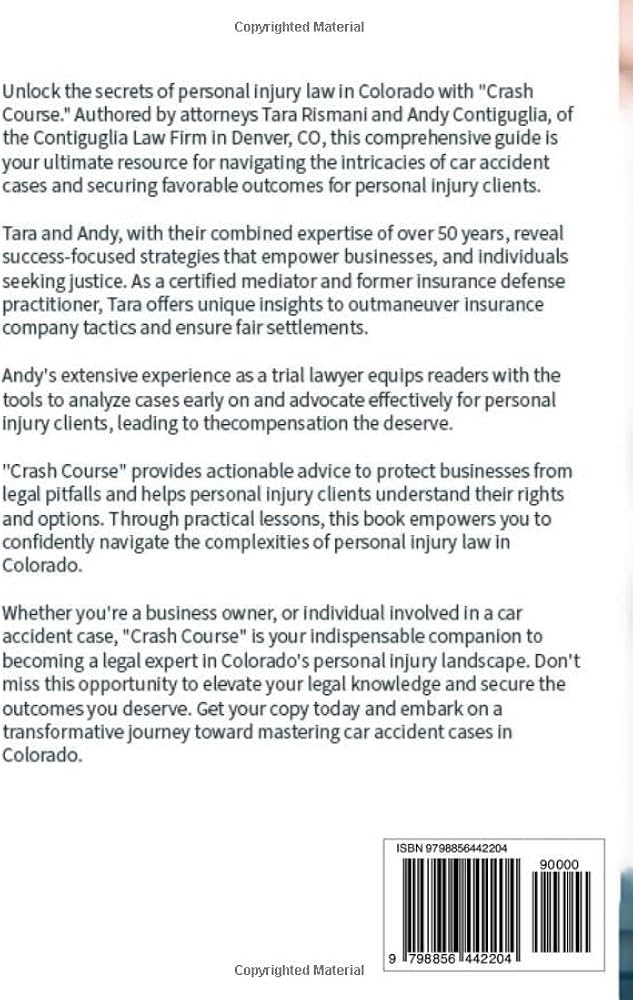Car Accident Injuries: Overview
Car accidents are a leading cause of injuries and fatalities in the United States. According to the National Highway Traffic Safety Administration (NHTSA), over 39,000 people were killed in motor vehicle crashes in 2020. Additionally, millions more were injured, with some sustaining life-altering injuries.
Car accidents can cause a wide range of injuries, from minor cuts and bruises to severe head injuries and spinal cord damage. The severity of the injuries depends on a number of factors, including the speed of the impact, the type of vehicles involved, and the location of the impact.
Even seemingly minor car accidents can result in serious injuries. Whiplash, for example, is a common neck injury that can be caused by even a low-speed rear-end collision.
If you have been involved in a car accident, it is important to seek medical attention immediately, even if you do not think you are injured. Some injuries, such as internal bleeding, may not be immediately apparent.
Early diagnosis and treatment can help to minimize the risk of long-term complications. The sooner you seek medical attention, the better your chances of a full recovery.
Common Car Accident Injuries
The most common types of car accident injuries include:
- Head injuries
- Neck injuries
- Back injuries
- Chest injuries
- Abdominal injuries
- Pelvic injuries
- Leg injuries
- Arm injuries
- Burns
- Lacerations
The severity of these injuries can range from minor to life-threatening. Some injuries, such as head injuries, can have lifelong consequences. Others, such as lacerations, may heal quickly with little or no scarring.
If you have been injured in a car accident, it is important to keep track of your symptoms and to seek medical attention as soon as possible. Early diagnosis and treatment can help to minimize the risk of long-term complications.
Injuries Caused by Car Accidents
Every year, millions of people are injured in car accidents. These injuries can range from minor scrapes and bruises to serious, life-threatening conditions. The type and severity of the injuries sustained in a car accident depend on a number of factors, including the speed and force of the impact, the type of vehicle involved, and the part of the body that was struck.
Types of Injuries
Car accident injuries can affect any part of the body. Some of the most common types of injuries include:
Whiplash
Whiplash is a common neck injury that occurs when the head is suddenly thrown back and forth. This can happen in a car accident, when the vehicle is rear-ended or hit from the side. Whiplash can cause a variety of symptoms, including neck pain, stiffness, headaches, and dizziness. In some cases, whiplash can also lead to long-term problems, such as chronic pain and headaches.
There are a number of things that can be done to treat whiplash, including rest, ice, and pain medication. In some cases, physical therapy may also be necessary. Most people with whiplash recover within a few weeks or months, but some people may experience symptoms for longer.
If you have been in a car accident and are experiencing neck pain, it is important to see a doctor to rule out whiplash. Early diagnosis and treatment can help to prevent long-term problems.
Injuries Caused by Car Accidents
Car accidents are a prevalent problem around the globe, and they can result in a wide range of injuries, from minor to severe. The force of a collision can wreak havoc on the human body, leading to trauma and long-lasting consequences. Understanding the common injuries associated with car accidents is crucial for victims, their families, and healthcare providers.
Common Injuries
The spectrum of injuries sustained in car accidents is vast, but some types occur more frequently than others. Traumatic brain injuries (TBIs) are among the most serious, as they can lead to cognitive impairment, memory loss, and personality changes. Spinal cord injuries can result in paralysis or loss of sensation, while broken bones can cause pain, mobility issues, and other complications. Lacerations, cuts, and bruises are also common, ranging from minor to severe.
Broken Bones
Broken bones are a prevalent injury in car accidents, accounting for a significant portion of cases. The impact of the collision can fracture bones in various parts of the body, including the arms, legs, ribs, and spine. Depending on the severity of the break, victims may require surgery, immobilization, and extensive rehabilitation. Broken bones can cause intense pain, limit movement, and hinder everyday activities. The healing process can be lengthy, requiring patience and adherence to medical advice.
For instance, a broken leg might prevent someone from walking or participating in sports, while a fractured rib could make breathing and coughing painful. In severe cases, multiple broken bones can lead to life-threatening complications and prolonged recovery periods.
Lacerations
Lacerations are tears or cuts in the skin, often caused by broken glass, sharp objects, or the impact of the accident. They can range from superficial to deep, requiring various levels of medical attention. Minor lacerations may require simple cleaning and bandaging, while deep cuts might necessitate stitches or surgery. Lacerations can also lead to scarring, infection, and pain.
Imagine a deep laceration on the face; it might not only cause physical pain but also leave a permanent scar, affecting a person’s self-esteem and social interactions.
Injuries Caused by Car Accidents
Car accidents occur more frequently than we’d like to admit. They can be caused by a multitude of reasons, and unfortunately, injuries caused by car accidents are just as common. These injuries can range from minor to severe, and in some cases, even fatal. Knowing what types of injuries can occur in a car accident can help you identify your injuries and seek the medical attention you need.
Severity of Injuries
The severity of car accident injuries varies greatly depending on the type of accident, the speed of the vehicles involved, and the condition of the occupants. Minor injuries may include cuts, bruises, and sprains. More severe injuries can include broken bones, internal injuries, and head injuries. The most severe injuries can be life-threatening and may require extensive medical treatment.
Types of Injuries
Car accident injuries can affect any part of the body. Some of the most common types of injuries include:
- Head injuries
- Neck injuries
- Back injuries
- Chest injuries
- Abdominal injuries
- Pelvic injuries
- Leg injuries
- Foot injuries
Seeking Medical Attention
If you’ve been involved in a car accident, it’s important to seek medical attention as soon as possible. Even if you don’t think you’re injured, it’s important to get checked out by a doctor to rule out any hidden injuries. Some injuries may not show up immediately, so it’s important to be seen by a medical professional if you’re experiencing any pain or discomfort after an accident.
Preventing Car Accident Injuries
There are a number of things you can do to prevent car accident injuries, including:
- Wear your seat belt
- Don’t drive while intoxicated
- Obey the speed limit
- Be aware of your surroundings
- Drive defensively
By following these tips, you can help reduce your risk of being involved in a car accident and suffering serious injuries.
Injuries Caused by Car Accidents: Consequences and Treatment
Car accidents can lead to a wide range of injuries, from minor bumps and bruises to life-threatening trauma. The force of the impact can cause a variety of injuries to the head, neck, back, and other parts of the body.
Types of Injuries
Car accident injuries can vary greatly depending on the severity of the crash, the position of the occupants, and the type of vehicle involved. Common injuries include:
- Head injuries: These can range from mild concussions to severe traumatic brain injuries (TBIs). TBIs can cause a variety of symptoms, including loss of consciousness, memory loss, and difficulty concentrating.
- Neck injuries: Whiplash is a common neck injury caused by the sudden, forceful movement of the head and neck. It can cause pain, stiffness, and headaches.
- Back injuries: Back injuries can range from minor strains and sprains to serious fractures and spinal cord injuries. These injuries can cause pain, numbness, and weakness.
- Chest injuries: Chest injuries can include bruised ribs, punctured lungs, and heart damage. These injuries can be life-threatening if not treated promptly.
- Abdominal injuries: Abdominal injuries can include lacerations, contusions, and organ damage. These injuries can be serious and require immediate medical attention.
Treatment for Injuries
Treatment for car accident injuries can range from first aid to long-term rehabilitation, depending on the severity of the injuries. First aid can include immobilizing the injured area, applying ice, and controlling bleeding. More serious injuries may require surgery, medication, or physical therapy.
Recovering from Injuries
Recovering from car accident injuries can be a long and challenging process. It is important to follow the doctor’s orders and attend all scheduled appointments. Physical therapy can help to improve range of motion and strength. Occupational therapy can help to improve daily living skills. Counseling can help to address the emotional impact of the accident.
Preventing Car Accidents
The best way to avoid car accident injuries is to prevent accidents from happening in the first place. Here are some tips for driving safely:
- Obey the speed limit. Speeding is a major factor in car accidents.
- Don’t drive distracted. Put away your cell phone and avoid other distractions while driving.
- Wear your seatbelt. Seatbelts can save your life in a car accident.
- Drive defensively. Be aware of your surroundings and anticipate the actions of other drivers.
What to Do After a Car Accident
If you are involved in a car accident, it is important to stay calm and take the following steps:
- Check for injuries. First, check yourself and your passengers for injuries. If anyone is injured, call 911 immediately.
- Move to safety. If possible, move your vehicle to a safe location out of the traffic lane.
- Exchange information. Exchange insurance information and contact information with the other driver(s) involved in the accident.
- Report the accident. Report the accident to the police, even if there are no injuries.
Conclusion
Car accidents can be a traumatic experience, but there is help available. If you have been injured in a car accident, seek medical attention immediately. Following the doctor’s orders and attending all scheduled appointments can help you to recover from your injuries and get back to your normal life.
Injuries Caused by Car Accidents: A Shocking Reality
Car accidents are a significant public health concern, leaving countless individuals grappling with life-altering injuries. From whiplash to traumatic brain injuries, the physical, emotional, and financial consequences can be devastating. However, understanding the common types and causes of these injuries can empower us to take proactive steps towards prevention and mitigation.
Understanding Common Injuries
Car accidents can cause a wide range of injuries, depending on the severity and nature of the collision. Some of the most common injuries include:
- Neck and back injuries, such as whiplash, strains, and sprains
- Head injuries, including concussions, skull fractures, and traumatic brain injuries
- Broken bones and fractures, particularly in the arms, legs, and ribs
- Chest injuries, such as bruises, contusions, and internal bleeding
- Abdominal injuries, including damage to organs and internal bleeding
- Burns and lacerations, resulting from contact with hot surfaces or broken glass
- Psychological trauma, such as anxiety, depression, and post-traumatic stress disorder
Preventing Injuries
While not all car accidents are preventable, there are a number of steps that drivers and passengers can take to minimize their risk of injury. These include:
- Always wear your seat belt: Seat belts are the single most effective way to prevent injuries in a car accident. They keep you securely in place and reduce the risk of being ejected from the vehicle.
- Drive sober: Alcohol and drug impairment significantly increase the risk of accidents and injuries. Never drive while under the influence.
- Obey the speed limit: Speeding is a major factor in many car accidents. By adhering to the speed limit, you give yourself more time to react to hazards and reduce the severity of any potential impact.
- Be aware of your surroundings: Pay attention to traffic conditions, pedestrians, and other vehicles. Avoid distractions such as texting or eating while driving.
- Drive defensively: Anticipate the actions of other drivers and be prepared to react accordingly. Leave ample following distance and be aware of potential hazards.
- Maintain your vehicle: Regularly inspect and maintain your vehicle to ensure that it is in good working order. This includes checking tires, brakes, and lights, as well as addressing any mechanical issues promptly.
It’s important to remember that even minor car accidents can result in serious injuries. By taking these precautions, you can significantly reduce your risk and protect yourself and others from harm.
Seeking Medical Attention
If you are involved in a car accident, it is crucial to seek medical attention immediately, even if you do not feel injured. Some injuries, such as internal bleeding or head trauma, may not appear immediately. It is also important to document your injuries and the circumstances of the accident for insurance and legal purposes.





Leave a Reply